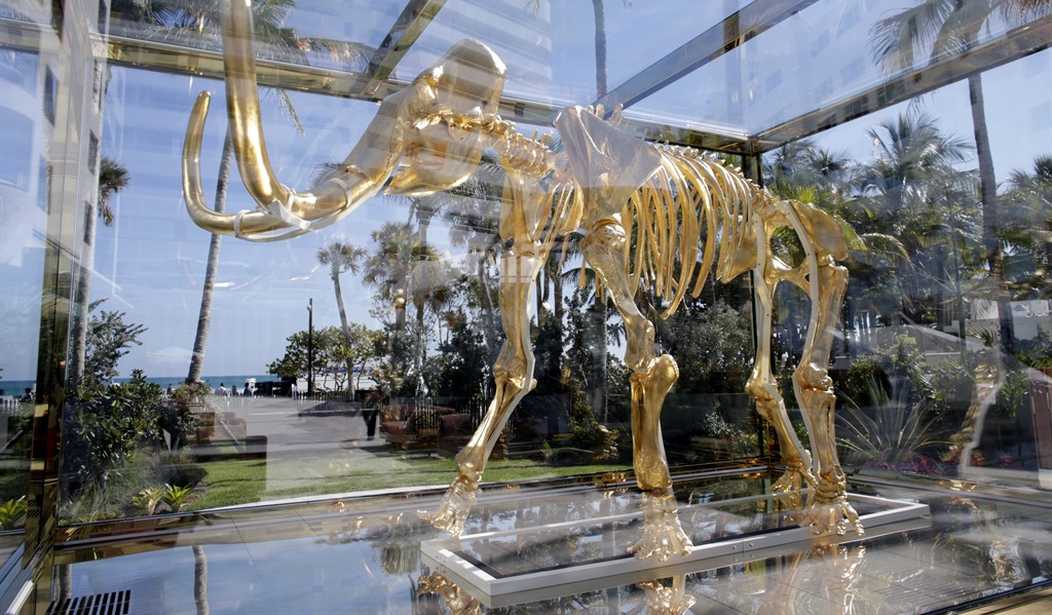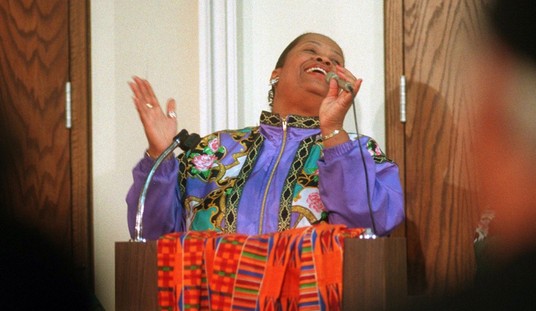I shamelessly loved the original "Jurassic Park" film because I have always and still do love dinosaurs as much as any kid. But as a biologist, there was so much about the movie that was just wrong, from the opening sequence in which a sauropod is munching on a eucalyptus tree, which would have been nastily toxic to an animal from the Mesozoic, to their use of the Underpants Gnome technique for genetic engineering:
- Extract DNA
- ???
- Dinosaur!
Genetics has been the topic of a lot of conversation lately, especially with the attention that the COVID-19 mess brought to the biowarfare discussion. There is, however, another matter in which genetic engineering may be useful, and there are ethical considerations involved. That would be "de-extinction," and it makes for interesting discussion. For our purposes here, let's not worry about dinosaurs — CGI-heavy movies aside, that's not going to happen. But there are efforts to de-extinct animals that humans did live alongside, and that is a very different kettle of fish.
First, the woolly mammoth:
What is hard to fathom is mammoths were walking the earth while humanity was building the pyramids. When you tell people that, it sounds crazy—even the pyramids have a mythical quality to them—and opens their eyes to the true timeline.
We were profoundly inspired by Colossal Biosciences' co-founder, the geneticist George Church, and his pioneering vision: To resurrect the woolly mammoth from extinction using the technological advances now at our disposal.
There was a lot of sequencing data from woolly mammoths appearing around a decade ago and George was a step ahead. He wanted to utilize these genomic sequences and build a technology company that could bring species back and restore ecosystems to mitigate the damage caused by humans—and so did we.
Wooly mammoths were around when humans were spreading across the planet. Our ancestors hunted them. They have a close living relative — the Indian elephant.
Another is the Australian thylacine or Tasmanian Tiger:
The apex predator killed off weak animals responsible for spreading deadly diseases among the animal kingdom.
He said: "The thylacine was the only apex predator in the Tasmanian ecosystem, so no other animal was able to fill its place once it was lost. We have already seen the impacts of this in the Tasmanian devil population, which was almost wiped out by a facial tumour disease.”
Dr Pask added that the world has already experienced the ‘profound impacts’ of its extinction. However, he is ‘confident that a well-managed reintroduction program would have huge benefits for that entire ecosystem by restoring that balance once more’.
And last but not least, the dodo:
The dodo has been extinct since 1681; a combination of predation by humans and animals introduced by humans led to its downfall, turning it into a textbook case for extinction. But according to the partners, its return to Mauritius could benefit the dodo’s immediate environment and other species.
Colossal first announced its intention to resurrect the dodo in January 2023. Exactly when it will be able to do so remains unclear, but fresh details regarding how it plans to recreate the species have been revealed.
The fact that these three critters lived alongside humans, unlike dinosaurs, makes some ethical questions a little easier. We're not talking about some creature from a different epoch; we're talking about animals that shared an environment with us, which environment hasn't changed dramatically since they were extant. While a lot of genetic engineering brings up some serious "Just because we can do a thing doesn't mean we should do a thing" vibes, I can't see that as being quite as big of a concern here.
There are serious hurdles to this, though. Cloning an extinct species, if we're going to bring back the actual animal, requires recovery of the intact nuclear DNA; DNA degrades very quickly, and the chance of recovery of an intact, viable cell is astronomically small. What is being proposed with mammoths, in some quarters, is instead combining traits of the wooly mammoth (perhaps by switching various genes on and off) with the Indian elephant and reinforcing those genes through selective breeding; in this case, they are not creating an actual mammoth, but, in the words of the fictional Dr. Alan Grant, a genetically engineered theme park monster.
Think, though, if someone was able to produce viable nuclear DNA, and they could produce a live mammoth calf — this is still the longest of long shots, to be sure. This isn’t a T-rex or a genetically engineered monster. It’s a mammoth, something that went extinct within the last few thousand years, something that co-existed with our species, something our ancestors occasionally laid their jaws on. But if anyone is worried about the impact an animal like this would have on the environment, they should relax. This baby mammoth — or thylacine, or dodo — will be one of the most valuable critters in the history of, well, critters. Jokes about mammoth hunting aside, it’s not like these critters will be turned out to fend for themselves in Tasmania, Mauritius, Alaska, or Siberia. Any recreated creatures would be the most valuable, pampered, coddled, protected, and cared-for animals in the history of livestock. They won't be running around loose, eating livestock — or people — or messing up the environment.
And, sadly, that means I'll never be able to go up north of Broad Pass to go mammoth hunting.














